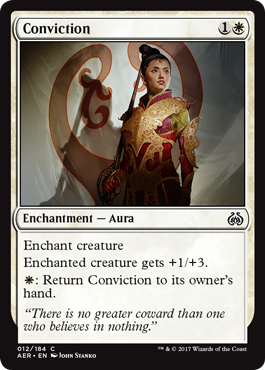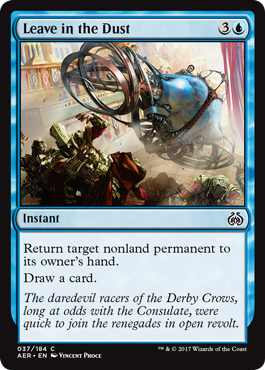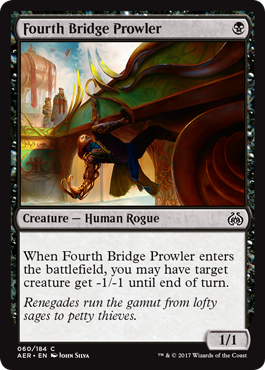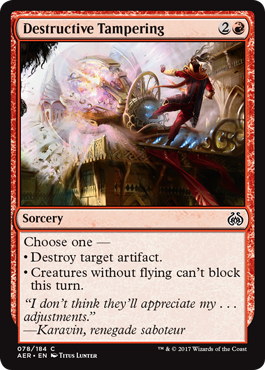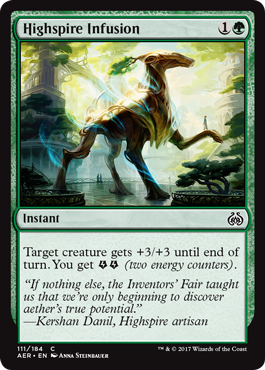People tend to focus on early picks when they prepare to draft. What cards do you want to take first? What’s the best common in each color? Do you take two drops over removal? These are important questions, and they make up the base level of draft analysis. But if you want to take your drafting to the next level, you need to go deeper.
The back half of each pack contains hidden gems that will make your deck better if you know how to draft with them in mind. You need more than twenty cards in your draft deck. Unless you play your first eight picks from each pack, you will need some of your late picks to round out your deck. If you stay open during draft, or take key sideboard cards, or speculate on a third color, that means more and more of your deck comes from cards that wheel around the table.
If you know which cards in each color are easy to pick up late, this helps your entire draft. First of all, you know what signals to look for in pack one as you hunt for open colors. Anyone can tell thatred is open if you get Chandra’s Revolution seventh pick. But you can also tell that red isn’t open when cards like Embral Gear-Smasher and Precise Strike don’t come back after you pass them early. On top of that, if you know what types of cards you can pick up late, that helps you focus your early picks on effects that you can’t get from less powerful cards. Often these cards are tricks or expensive creatures, and that knowledge can help you choose the strong two drop over the powerful five drop.
I’ve picked one common from each color in Aether Revolt that I see come around late in packs one and two of the draft format. All of these cards are pretty good, but not strong enough to be early picks when the color is open. These are cards you should look for early in packs and plan to pick when the pack comes back eight picks later. If they don’t come back, maybe you need to look for another color. If they do, you’ve got a solid playable without using prime draft slots.
Other than shenanigans with Sram, Senior Edificer, this card doesn’t get much attention. Conviction basically plays like equipment, letting you move it around for effective attacks and blocks, or to protect a key creature from removal. It’s not a card I build my deck or strategy around, but I’m happy to pick one up at some point to help round out my deck. Three extra toughness is a lot. In addition to blocking well, you can beef up a creature with a good attack effect, like Renegade Wheelsmith, so that you can make it hard for your opponent to trade off.
I like this card a lot, but it doesn’t get a ton of love in Aether Revolt draft. Four mana is a lot for an interactive spell, and most decks don’t have room for more than one copy. That helps this card get around the table. I’ve drafted blue in Aether Revolt more than I probably should have, and late copies of Leave in the Dust have been a big contributor to that. Bouncing a permanent and drawing a card is good value whether you are trying to win through tempo or protect your control deck after stabilizing. Leave in the Dust fits in most blue decks and does good work.
One-toughness creatures have gotten a lot more popular in Aether Revolt than they were in triple Kaladesh draft. Black used to lean on Subtle Strike, which had more flexibility, but now you can happily run Fourth Bridge Prowler to take out dangerous creatures like Aether Chaser, Welder Automaton, and Glint-Sleeve Siphoner. The 1/1 body isn’t especially useful, but it can still trade with some of these one-toughness creatures in combat, crew vehicles, or sacrifice to Defiant Salvager. One copy of the prowler has been a welcome addition to my black decks.
I’ve been a big fan of Destructive Tampering since the set was spoiled. Falter effects tend to be useful but not good enough to play in your main deck. Whenever I see one of these cards that also does something else, I take note. It turns out that both modes of this card are great. Three mana for a sorcery Shatter isn’t a good deal, but you’ll happily pay that to take out Aethersphere Harvester or Skysovereign, Consul Flagship. Wiping out non-flying blockers ends games. Not all of them, but enough. I’ve enjoyed holding Destructive Tampering in hand, deciding whether to use it on a decent artifact, or to line up a lethal attack. Unless you run into the all-flier deck, you’ll have great uses for this card. Be happy to pick up one or two late in your draft.
Most of the pump spells in the format increase stats by two or less. Giant Growth is meaningfully bigger, and makes double blocks more dangerous for your opponent. Highspire Infusion costs an extra mana, but it gives back two energy for that trouble. Two mana is still a small cost for a pump spell, and I like getting some real buffs from one card. Obviously it gets better with trample or evasion, but I’m happy to slam this card on any creature that needs it.
As you study the draft format and look for edges, focus on the less popular cards in each color. Figure out what you can get for your deck late in the pack, and adjust your early picks to maximize the value of these hidden gems.
Carrie O’Hara is Editor-in-Chief of Hipsters of the Coast.


